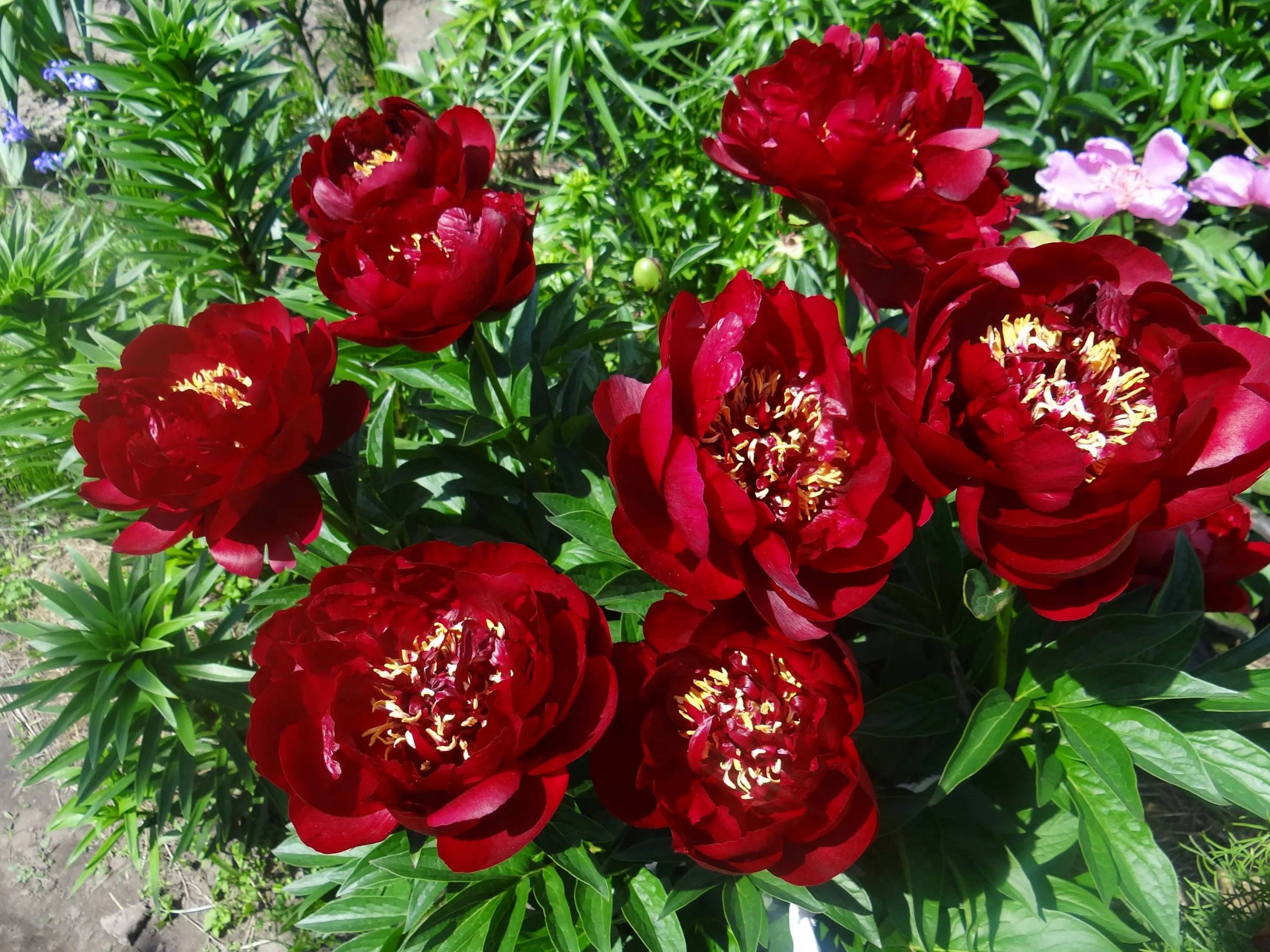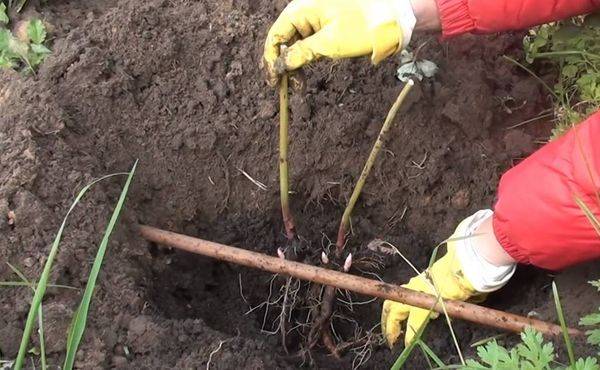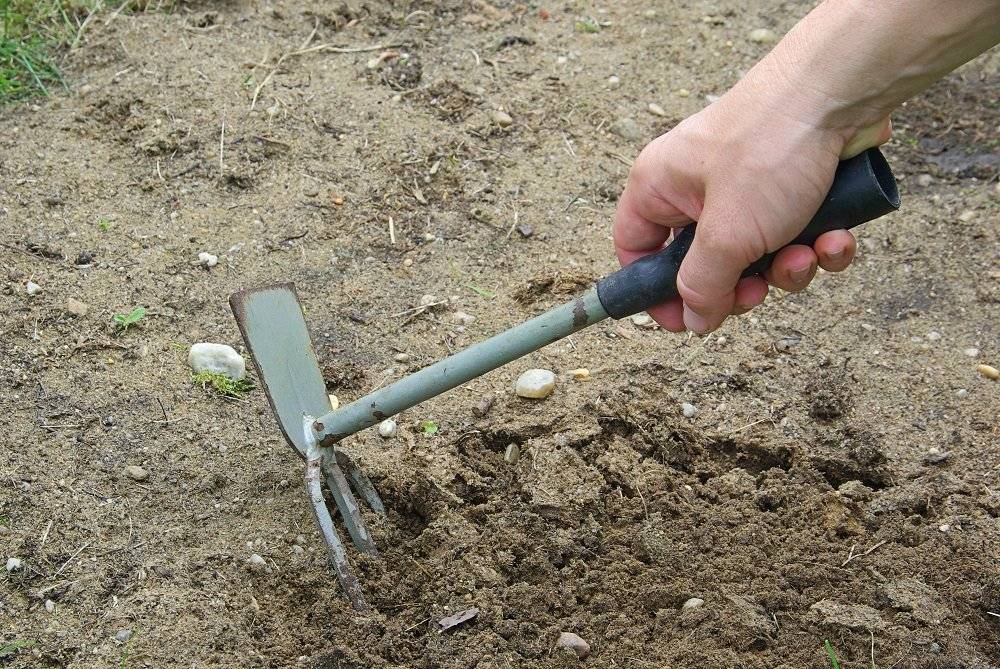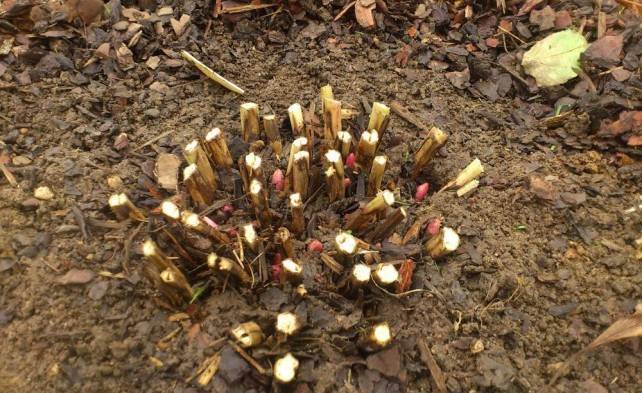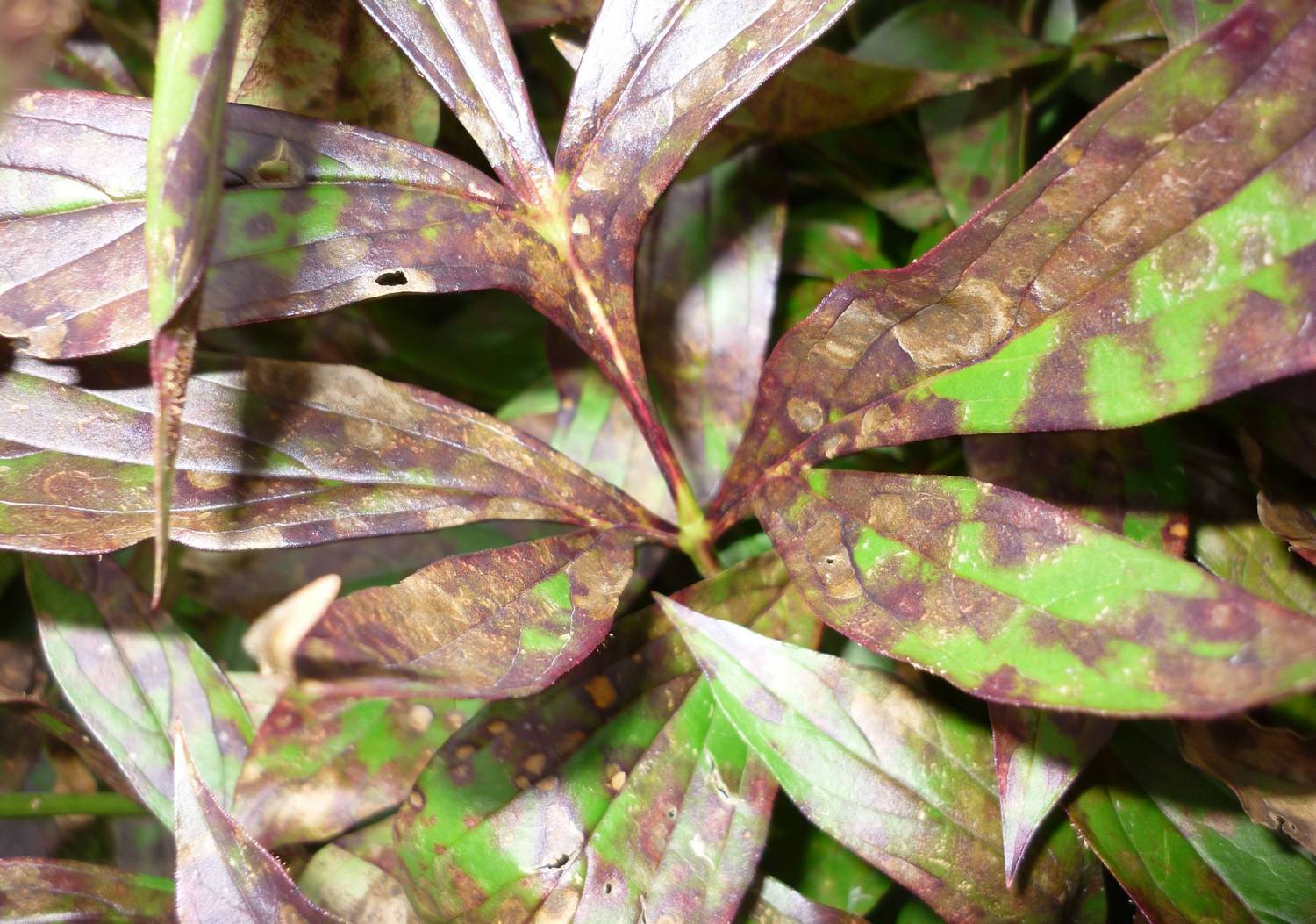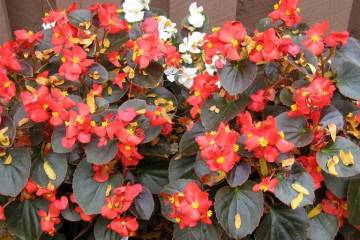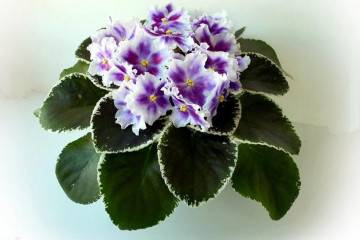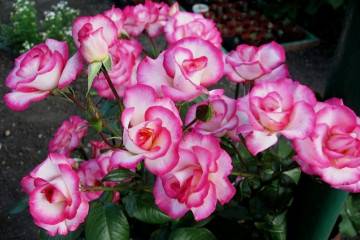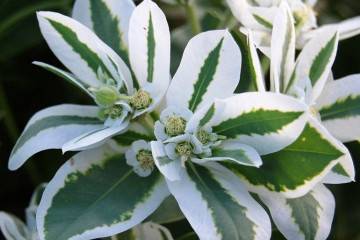Peony Buckeye Bell (Paeonia Buckeye Belle) - features of cultivation
Content:
Delicate spring beauties enchant with their huge flowers. Peony Buckeye Bell is a brown-red prince with yellow contrasting stamens. Features and secrets of care should be known to each owner.
Peony Buckeye Bell (Paeonia Buckeye Belle) - what is this variety
American breeders were engaged in the development of hybrid varieties. Interspecific hybrids were mainly obtained as a result of crosses of medicinal and milk-flowered peonies. So in 1956, the grassy handsome peony Buckeye Belle appeared in the United States.
Brief description and characteristics
Semi-double peony belongs to the early varieties. Its bush grows up to 80 cm in height. Amazing flowers with a diameter of 16 cm, dark red with brown and burgundy tint. The flower is pinkish, 5-6 rows. In the center, bright yellow stamens are mixed with small inner petals.
Advantages and disadvantages of the variety
Frost resistance, resistance to fungal diseases, beautiful flowering - these are the main advantages of the Bell variety.
The disadvantages of Bakai include slow growth (sometimes up to 1 branch per year) and the high price of planting material.
Use in landscape design
On the flower beds, the peony Bucky Belle, as it is also called in Russia, can set off the light tones of peonies or other flower plantings. In the mixborder, the peony perfectly coexists with bulbous flowers (tulips, daffodils, lilies).
Growing a flower
Peony is not the most picky flower. The secret of its successful growth in a flower bed lies in the correct planting and location.
Planting by root cuttings
Root cuttings are obtained from peony propagation by dividing the bush. Small shoots must have at least 2 buds for successful rooting. The seedlings are grown in a nutritious soil, and only after two years they will be able to go to a permanent place of growth.
What time is the boarding
You need to plant a peony at the end of summer. The heat has already subsided, and before the cold weather there is enough time to take root. It is important for a young seedling to build up the root mass. If planted in the spring, the bush will grow green, drawing out the last juices from the roots, and will soon die.
Seat selection
Peonies love sunny places that will be well ventilated. When choosing a place, it should be borne in mind that one bush for good growth needs 1-2 m² of personal space. Also, you should not plant peony bushes next to buildings, trees and shrubs, which will shade the foliage for more than 3-4 hours throughout the day.
How to prepare the soil and flower for planting
The landing hole is prepared a few days before disembarkation. The required size of the hole is 40 * 40 cm, the depth is 35 cm. The bottom of the planting hole is covered with drainage. Peony soil is a mixture of:
- rotted two-year manure;
- sawdust;
- garden land;
- peat.
Ash is added to the soil mixture at the rate of 1 glass of ash per 15 liters of soil. You also need top dressing - 200 g of superphosphate and 60 g of potassium fertilizer.
The prepared pit is poured with the resulting mixture and spilled well with a solution of potassium permanganate. So the hole is left for several days. When the soil subsides, it is ready for planting.
Planting procedure step by step
After preparing the landing pit, you need to:
- Deepen the seedling so that the buds are in the ground at a depth of 5 cm.
- Covering with earth from above, leave a depression to retain moisture after watering.
- If planting is carried out on a hot day, the planting should be covered with compost.
A week after planting, the seedling is stimulated with a rootstock. Fertilizers laid in the planting pit will last for two years for the peony. During this period, he does not need additional feeding.
Planting with seeds (for breeding)
If the seeds are harvested on their own from the bush at the end of summer, they should be sown immediately. So they go through the necessary stages of stratification. The temperature of a warm autumn promotes the growth of the root system, and its further decrease to 10 ° C hardens the young shoot.
After the bud appears on a young bush, it is transplanted into a container with nutrient soil and the thermal regime is maintained at 15-20 ° C. It is necessary to plant a young seedling no earlier than August next year.
Plant care
Caring for an unpretentious peony consists of regular watering, fertilizing and removing weeds.
Watering and feeding
Watering for the peony needs moderate. Once a week, the bush should be watered with 2-3 buckets of water. It is especially important to monitor the watering regime before setting the buds in spring, during flowering and at the end of summer when buds are forming.
Peonies need top dressing:
- in early spring, to maintain abundant flowering, fertilize with Azophos. It is not buried too deep and is well spilled on top with water;
- at the time of the appearance of buds, fertilize with any means for flowering garden plants;
- at the end of summer, fertilization stimulates flowering for the next year. A phosphorus-potassium solution is needed here.
Mulching and loosening
Regular loosening allows the roots to access oxygen and prevents the soil from compaction and crusting after watering. During mulching, weeds are removed at the initial stage of growth. Near the stems, the soil should not be loosened too deeply so as not to damage the buds.
From early spring, they mulch with horse manure. The layer should be small. In the northern regions, peonies mulch before winter. Peat, dry leaves can act as mulch.
Preventive treatment
Spring treatment helps to protect against fungal and bacterial diseases throughout the growing season.
Peony Blossom Bucky Belle
In Central Russia, the early Belle variety pleases with flowers in early June. Duration of flowering up to 15 days. Buds bloom on each stem. Every year the flower becomes thicker and more voluminous. The aroma of peony is neutral, barely perceptible.
A period of activity and rest
The active period of the peony begins in early spring. The snow is melting, and the flower buds are already peeking out of the ground. It is important not to let them develop actively if frosts are ahead. If the flower was mulched in winter, you need to remove the mulch. So the roots and buds wake up at the same time.
The dormant period begins in the fall, when the buds are formed for the next year.
Care during and after flowering
During flowering, the volume of water for irrigation should be increased to 3-4 buckets per bush. If the bushes were watered less than once a week, then during flowering this should be done every 7 days.
Peony Bikey Belli during flowering is in dire need of feeding. Complex fertilizer for blooming garden flowers will come in handy here. The composition must necessarily contain potassium and phosphorus.
By the end of flowering, it is important to remove faded inflorescences so that they do not fall to the ground under the bush. They can provoke putrefactive processes and the development of a fungus.
What to do if it does not bloom
If the peony is not blooming, there are many factors to consider. In the absence of the first flowering, the following planting errors were made:
- the buds of the seedling are too deep (more than 5 cm);
- wrong landing site - shaded and damp;
- the plots were small and did not have time to grow roots, or, on the contrary, large plots were planted, and the small roots cannot provide sufficient nutrition;
- acidic soil, you need ash or lime.
If the bush has already bloomed, and there is no flowering in the new season, it means that mistakes were made in the care:
- a lot of nitrogen fertilization was applied in the spring;
- at the beginning of spring, the buds were frozen or mulch was removed early;
- leaves were cut early in autumn;
- last season, the bush was poorly fed and watered.
Peonies after flowering
After flowering, the peony decorates the flower bed with its greenery until the fall.
Transfer
Bushes are transplanted for the purpose of reproduction. It is important to divide it equally and process the cuts with charcoal or brilliant green. After breeding, both cuttings are planted in new planting pits with renewed soil.
Pruning
In autumn, all peony shoots are cut flush with the ground. They can cover bushes, protecting them from the first frost.
Preparing for winter
Young peonies, as well as those growing in the northern regions, are insulated for the winter by mulching.
Diseases, pests and ways to control them
Timely prevention ensures the health of the bush throughout the season. If the leaves after flowering are covered with brown or gray spots, you need to act: remove all damaged leaves and process the rest.
Of insects, peonies are bothered by ants and aphids. To combat them, you need to treat young shoots in the spring with insecticides. During the flowering period, you should remove the bronze beetles that eat out the middle of the flower.
Caring for Belle peonies is simple. It is important to provide the flowers with fertilization and watering. Resistance to disease and cold will greatly facilitate the cultivation of these beauties.
